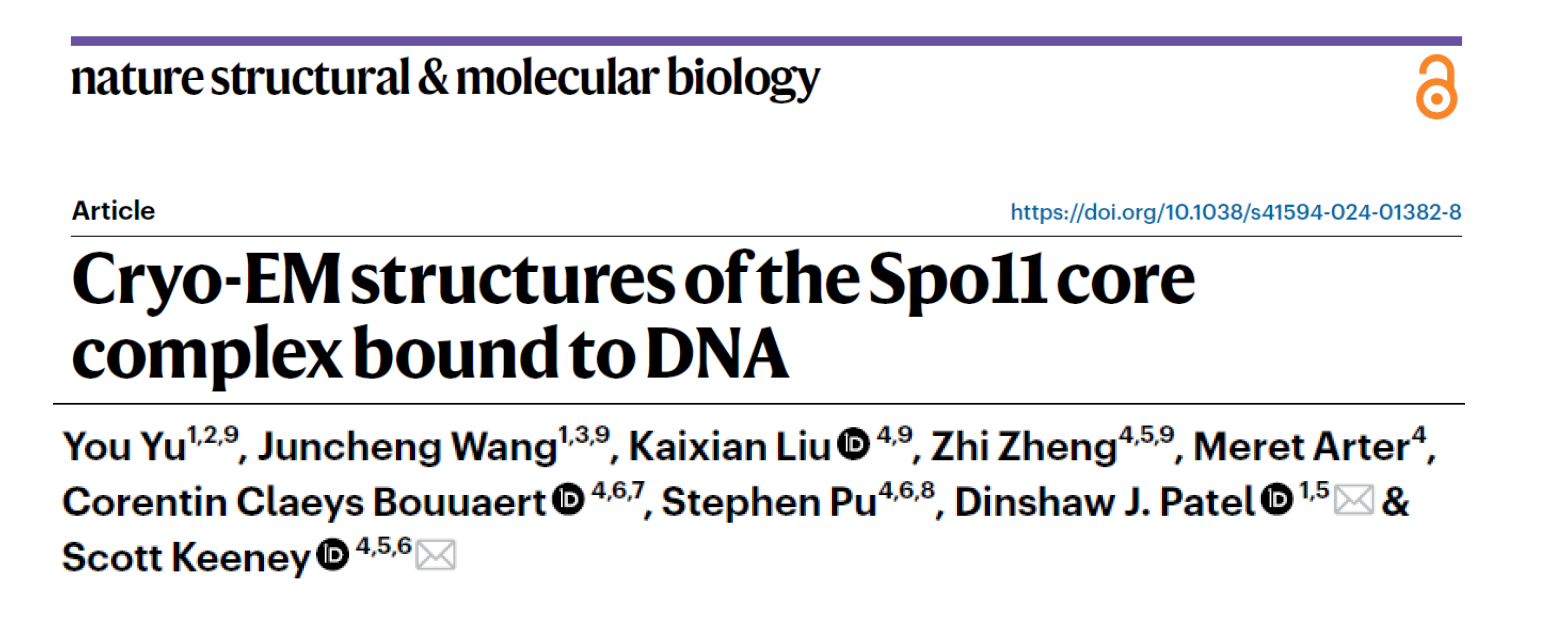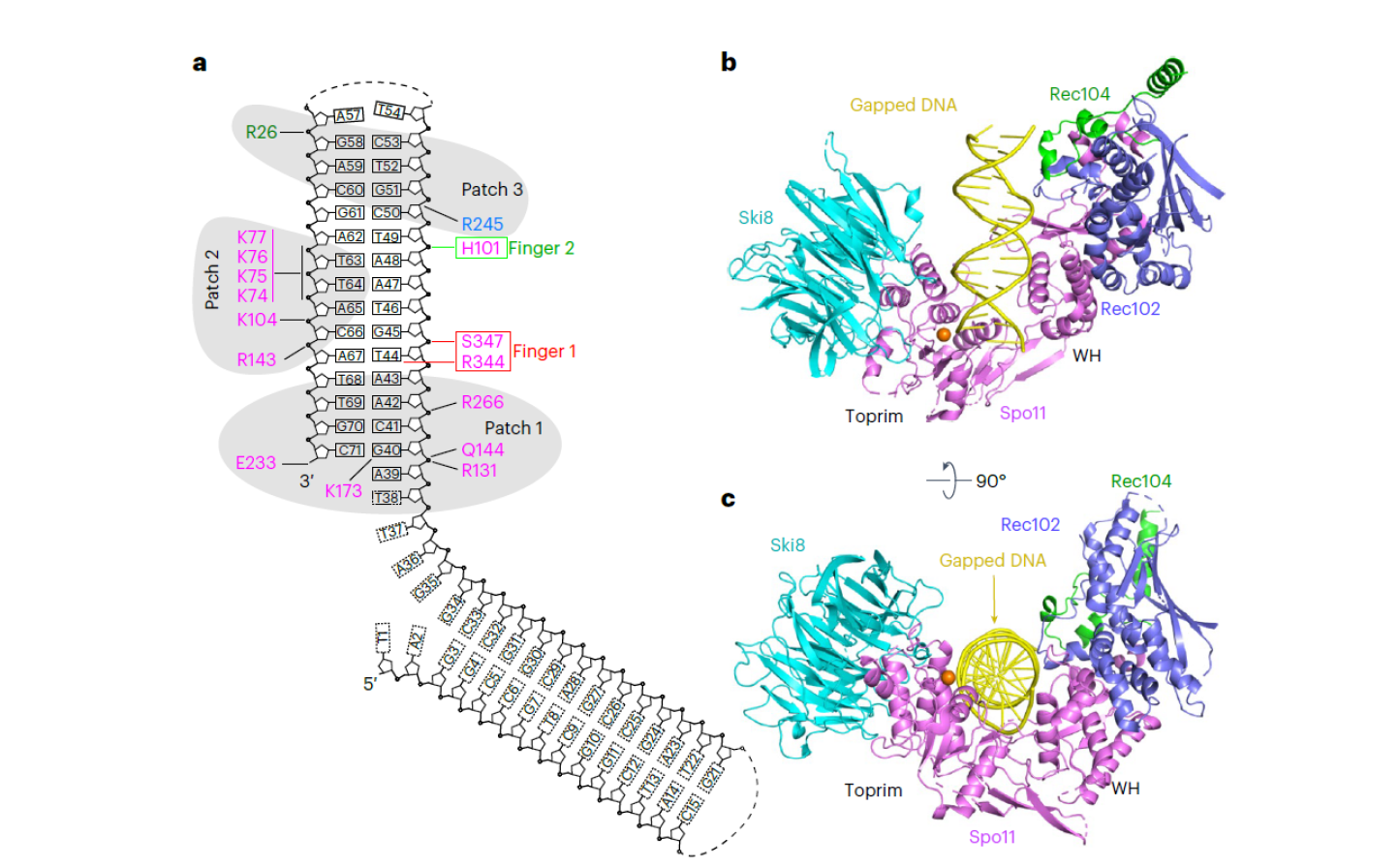Meiosis is a special type of cell division used by sexually reproducing organisms to produce gametes. During meiosis, homologous chromosomes pair up and undergo mutual exchange through homologous recombination, which is crucial for the accurate separation of homologous chromosomes during the first meiotic division. Meiotic recombination is thus one of the driving forces behind genetic diversity and the adaptive evolution of sexually reproducing organisms. Meiotic recombination is initiated by DNA double-strand breaks (DSBs) created by the Spo11 core complex, and the subsequent repair of these DSBs can lead to the formation of chromosomal crossover structures, ensuring stable chromosome pairing and exchange. Although Spo11 evolved from the cleavage subunit Top6A of the archaeal topoisomerase VI (Topo VI), and almost all reproductive organisms use Spo11 to generate meiotic DSBs, the composition of the Spo11 core complex, its correspondence with Topo VI, and the molecular mechanisms of its binding to and cleaving DNA substrates are still not well understood.
Recently, a research paper titled "Cryo-EM structures of the Spo11 core complex bound to DNA" was published in Nature Structural & Molecular Biology. The first author of the paper is researcher/assistant professor You Yu from ZJE (Zhejiang University- University of Edinburgh Institute), and the co-first authors are Dr. Juncheng Wang from the Institute of Advanced Medical Sciences at Shandong University, and postdoctoral researcher Kaixian Liu and PhD student Zhi Zheng from MSKCC (Memorial Sloan Kettering Cancer Center). The paper reported for the first time the Cryo-EM structures of the Spo11 core complex (Spo11-Rec102-Rec104-Ski8) bound to DNA (hairpin DNA/gapped DNA) at resolutions of 3.7Å and 3.3 Å. These structures revealed the detailed interactions between the subunits within the Spo11 core complex, as well as extensive interactions between the Spo11 core complex and the DNA backbone and with the recessed 3'-OH, and the first 5' overhanging nucleotide.

The study determined the molecular mechanism by which the Spo11 core complex specifically binds to DNA ends and revealed the molecular mechanism by which the Spo11 core complex preferentially cleaves DNA in vivo. At the same time, yeast functional experiments also verified the interactions between subunits within the Spo11 core complex and between proteins and nucleic acids, and revealed the specificity of the Rec102 subunit structure, which is homologous to the archaeal Top6BL (Figure 1). Finally, the study provided an in-depth understanding of the dimerization of the Spo11 core complex and the role of divalent metal ions in catalyzing the enzymatic reaction of DNA double-strand breaks.

图1. Gapped DNA结合Spo11核心复合物的冷冻电镜结构及蛋白-核酸相互作用
This study was collaboratively completed by the teams of Scott Keeney and Dinshaw Patel from MSKCC. It also represents a new discovery by Dr. You Yu, who joined ZJE in 2024, in the field of chromosome structure maintenance and chromosome stability research.
The You Yu Research Group at ZJE has long been engaged in structural and molecular biology research related to the maintenance of chromosome structure and chromosome stability. Innovative research achievements include studies on the molecular structure of the SMC5/6 complex and its molecular mechanisms of interaction with DNA, as well as research on the structure and molecular mechanisms of novel antiviral nucleic acid immune effectors, including the SMC5/6 complex (and the membrane protein Cam1). The laboratory is actively recruiting postdoctoral fellows in the fields of structural biology, molecular biology, genetics, and immunology, and encourages undergraduate students interested in these research directions to apply for M.S. or Ph.D. with our group.
Link to the paper:https://www.nature.com/articles/s41594-024-01382-8
Introduction to Dr. You Yu's Research Group:https://person.zju.edu.cn/H124005







